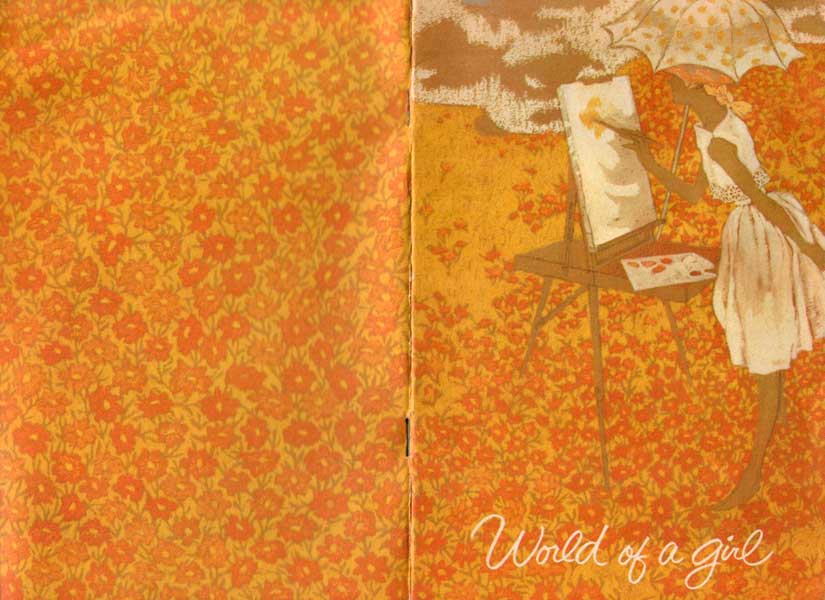See the complete 1969 edition of How
Shall I Tell My Daughter? (Modess pads and tampons).
See some covers of How shall
I tell my daughter? and an excerpt from the 1969
edition.
 
|
 
World of a girl, puberty and menstruation
booklet, Confidets sanitary napkins, 1965, U.S.A.
Complete booklet
|
In America, probably starting in the 1920s, several companies produced
booklets for girls (and sometimes their parents)
who needed information about puberty but especially menstruation. Kotex seems to have been the first but Modess
pads, Beltx napkin belts, Pursettes
lubricated tampons, and o.b. tampons (see
the whole list on this site) later saw the need
and advantage and printed theirs. Companies also created film strips, movies and videos for schools often combined with
teachers' manuals (more here),
and pads and tampons to give to the kids.
What the companies did was replace the parents as the source of information
about menstruation and how to handle it. But most modern American parents
hardly know how to talk about it; Oh, the stories I heard from visitors
to the physical museum! Joan Jacobs Brumberg of Cornell University bares
the truth about this in "'Something Happens to
Girls': Menarche and the Emergence of the Modern American Hygienic Imperative"
in the Journal of the History of Sexuality, 1993, vol. 4, no. 1.,
and by Lynn Peril on this MUM Web site. Prof.
Brumberg recently [1997] wrote The Body Project,
a history of cultural attitudes toward the girl's body in America - read
it!
In 1978 Consumer Reports magazine wrote that American women preferred
Confidets to all other pads, according to Nancy Friedman in her book Everything You Must Know About Tampons (Berkley
Books, New York 1980; Ms. Friedman
praised this museum in response to my radio - and simultaneous TV - interview
with Howard Stern), shoving aside the more famous Kotex and Modess.
The reason might have been the tapered shape:
women have more room at the top of their vulvas for
a pad, the thighs and buttocks compressing the material at the rear -
and the disposal bags (see other disposal bags
). Both might have been firsts in the industry.
See a diagram showing a similar anatomical problem, that of why the
tabs on pads using belts (like this one; it would be years before the familiar
stick-in-panties pads appeared, like Stayfree)
had to be longer in the back. Roping (twisting
the pad) and the pad's shifting were problems the companies - and women!
- have always dealt with, usually unsuccessfully.
Scott Paper Company brought the brand out in 1961 but discontinued it
in the 1980s.
The stylish and colorful illustrations return to the first illustrations
for such booklets, in the Marjorie May series
((stylish but not colorful), and other booklets of the time made similar paintings. They show white, middle-to-upper class
girls with fashion-model faces and bodies unlike the more average girls
and women in the 1940 Kotex As One Girl to Another
and That day is here again . . . from 1944
- although there's not a fat one or non-white in the bunch. The implied
wealth connects it to early Kotex magazine ads.
Thanks again to the Dutch contributor of these scans!
|
Below: Back (at left) and front covers.
|
 |
 |
© 2007 Harry Finley. It is illegal to reproduce or distribute any
of the
work on this Web site in any manner or medium without written
permission of the author. Please report suspected violations
to hfinley@mum.org
|
|